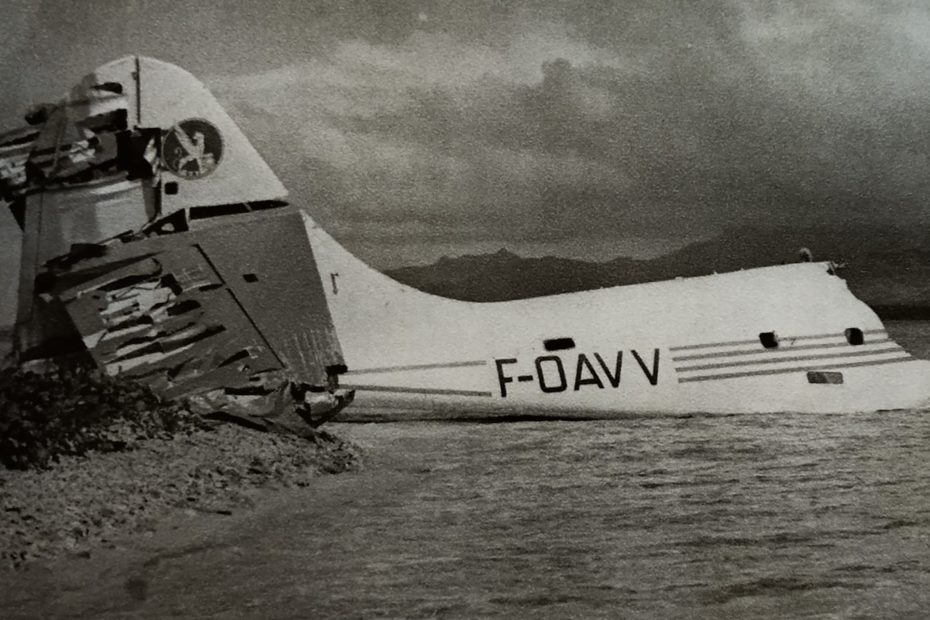Today it’s a very special story that I’m sharing on this blog. These are not direct residents of Raiatea, but a family whose history has been inextricably linked to our island. You know that I like to delve into the past of Raiatea and its inhabitants, to continue to tell what each has lived, to bear witness to the past and the lessons it has given us. During this research, I bought Michel LIAUT’s book, “Souvenirs de Uturoa”, and my attention was drawn to this photo of the tail of an airplane …
I did not know the story of this crash, and while doing some research, I was moved to think how these families must have felt … I read a comment from Raiteva VANFAU on Facebook (granddaughter and daughter of survivors), who explained that this kind of event reminds us that life is precious and must be savored. I then contacted her to find out if she and her family would agree to explain to us what a turning point this drama had been for them.
I was aware that I was asking them for a difficult job of remembering and I thank them very much for agreeing to share some of them with us. Raiteva delved into the story her grandmother told her about the accident and her father completed her story.
The idea was that it could testify for each of us: even the most painful of events can turn into something constructive, depending on what we decide to do with it. This family is an example of what we call “resilience”: it’s not a word you use every day, but they are living proof of it. Resilience is “a psychological phenomenon which consists, for an individual affected by a trauma, of taking note of this event but without living in unhappiness and of rebuilding himself in an acceptable way.” In other words, we don’t deny what happened, we endure it as best we can, but above all we decide to bounce back so that the rest of our life is not used for nothing …
I let you discover the courage of this family who sought to rebuild themselves after the Catalina crash on Wednesday February 19, 1958 …
THE DAY WHEN EVERYTHING SWAPS ...
We are in February 1958, in Tahiti. Madeleine MOU KAM TSE (wife VANFAU), who will be called “Grandma”, receives a call from her family in Raiatea: “Mama TEHA is very ill, you have to go to her bedside quickly! “
Mama TEHA is her mother, Tehapai PUURA (wife MOU KAM TSE). We must quickly find a solution to regain Raiatea. At that time, “Grandma” and her husband, Jean VANFAU said “AH FOU”, had 2 children: the eldest is Abel (but he is more often called Célestin), and the younger son is Milton (known as Coco). The idea is to go with the family, but unfortunately Jean cannot take any time off … He therefore resigns himself to buying 3 plane tickets for his wife and sons, departing from Faaa …
Taking a plane seems obvious to us, especially when you have to go to the bedside of a sick family member. But you have to put yourself in the context of the time and dive back a little into history to understand what it was like to take a plane in the 1950s …
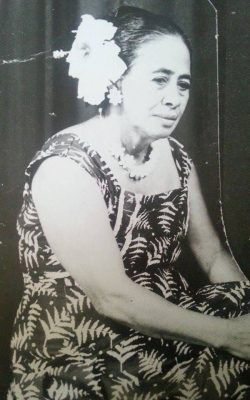
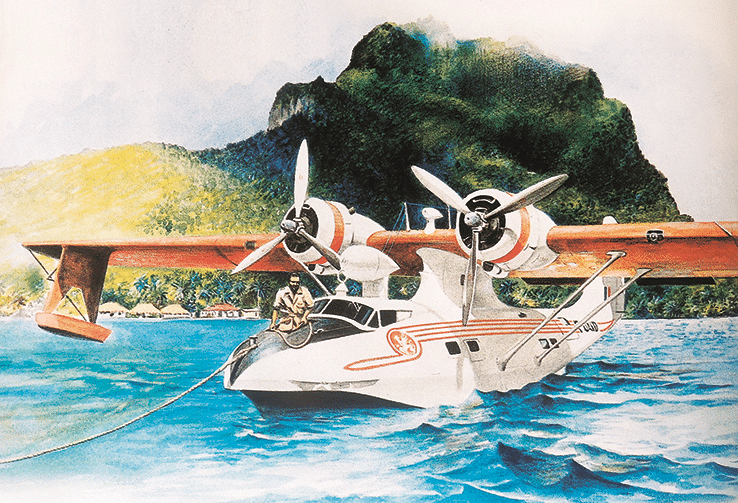
Our islands were opened to aviation in 1925 thanks to seaplanes since there were no land runways at the time. For a long time, we will be satisfied with “natural trails” such as the lagoons or certain deep bays with less agitated waters…
It was only in the 1950s that they began to be used for commercial use. Before that, we linked the islands with our famous “schooners”.
Until TAI (Intercontinental Air Transport) took an interest in our part of the world. From Paris, this French company flies to New Caledonia, New Zealand and French Polynesia where its planes land on the runway at Bora Bora.
But, she then decides to conquer the inter-island links. Its local subsidiary takes the name of Régie Aérienne Interinsulaire (which will become Réseau Aérien Interinsulaire and will subsequently undergo several changes until it becomes the current Air Tahiti). In 1954, it acquired a first Catalina type seaplane, then a second in 1957.
So a breakthrough for transport and for Polynesians who will be able to move more easily and transport freight and mail more quickly between Tahiti and the islands … but comfort and safety very different from what we know today!
In fact, you have to join this seaplane to get on board! This is what it looked like (even if in this photo we are later with a “Bermuda” seaplane …) But we are still very happy that it was put in place at that time!
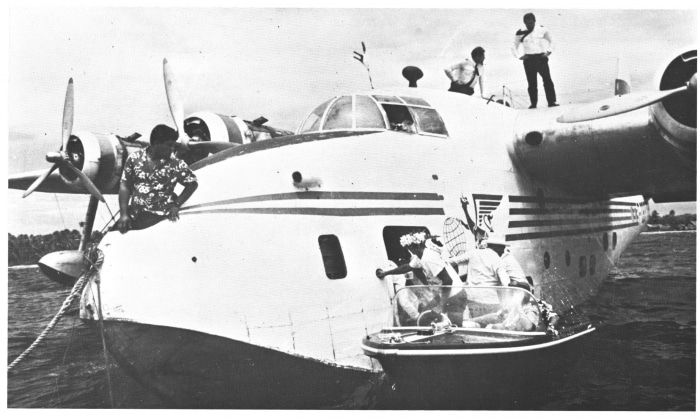
So this is the kind of flight the family is about to take to get to Mama TEHA’s bedside. Let Raiteva VANFAU (Milton’s daughter) continue the story her grandmother told her:
“That day, February 19, 1958, Grandma had a bad feeling; she remembered it very well because Celestin (3 years old) only cried when it was time to board the plane. He was screaming that he wanted to stay with Papi who had come to watch their departure. Despite everything, Grandma with papa in her arms and Célestin by her side, end up boarding the Catalina registered F-OAVV, belonging to the company RAI. ”
The take-off and the flight are going well. The arrangement of the seats being 2 by 2, Miton (who is less than a year old) is seated next to his mother while Célestin, on the opposite row, finds himself with another gentleman… but Grandma knows him well. .. She also notices that there is another woman on board with a child about the same age as Celestin. What adventures for these young children!
The flight soon comes to an end: she sees an island from her window, satisfied to see that they will soon land in the lagoon of Raiatea. It is 8:50 am, she looks attentively on her children without knowing that a drama is going to play out at that moment …
“Suddenly the plane receives a great shock that knocks Celestin from his seat. Granny yells at the man sitting next to him to catch up and hold him back. But everything goes very quickly: the plane breaks, sheets are flying everywhere. Granny hugs daddy, hugs him tight and closes her eyes… They are now in the water, she is swimming to rise to the surface. There’s flaming kerosene everywhere, dad is burned and injured in his left knee. Granny weakens quickly because her right leg is wide open, she is losing a lot of blood … Despite everything, she spots a wing of the plane where a man has clung to: she begs him to hold daddy and then faints. “
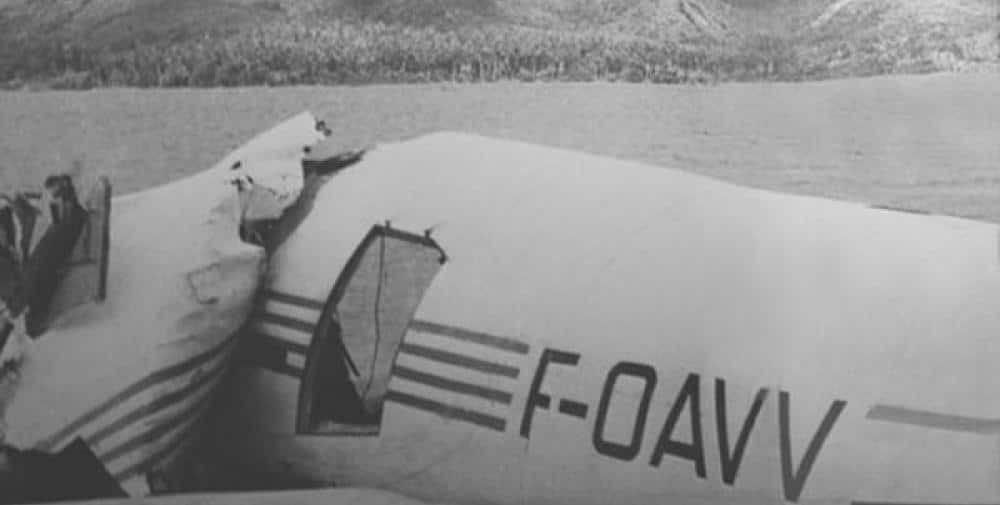
Indeed this drama will play out very quickly since the device, after having violently struck the water, sank in 36 m of water in about 10 or 15 minutes …
But what happened? To understand the accident a little, we have to talk about the weather conditions: a uniform gray sky, no wind and therefore not the slightest ripple on the lagoon, which remains gray and smooth. One might think that everything is favorable but on the contrary, these are conditions conducive to “mirage”, which make it difficult to assess the exact altitude above the body of water during the most delicate maneuver of the flight. , the water landing.
Mr Lebihan, expert at Bureau Véritas, and responsible for investigating the causes of the disaster, provides more details in his report. The mirage is “a luminosity which generally does not allow even the confirmed pilot to properly assess the height at which he is above the water.”
The pilot’s objective, in this kind of situation, is to regulate his descent at a low speed, so that the seaplane touches the water without any danger, without even knowing that the water is there … It is what Commander Allais did that day. He asks his co-pilot Seitre how high they are. Instead of looking outside, Seitre had to consult the instruments to answer: “We are 18 or 20 meters away”.
At this moment, Captain Allais realizes that he is dangerously facing a small point and decides to make a slight sliding turn to gain a few meters in order to find himself in the axis of the landing plane. The testimonies clearly indicate that no maneuver was initiated to straighten the aircraft which was in descent. The pilot therefore simply did not see the water and it was in this sliding maneuver that the aircraft lost a little height: the right wing of the seaplane had tilted, so that its end abruptly hit the lagoon water. The wing tip float is torn off, the masts which support the wing relative to the hull are sheared. On the wing, both engines were running at at least 2,500 rpm. The shock moves the fuselage and the propeller of the right engine which still turns shears the hull at the height of the cockpit.
“Co-pilot Seitre was to die instantly, the top of his head decapitated by the propeller. Commander Allais suffered the same fate, also horribly affected. The front of the torn off hull therefore ejected the two unfortunates. The panel behind the cockpit was torn off because of the weight of the radios and other batteries attached to it. And at the same time, the radio station Odon Tchan was released. He found himself scratch-free in the water, where he was lucky enough to find the wing tip float to grab onto it. This enabled him to save Mme Scipio who was holding her child in her arms, and was swimming rather badly. ”
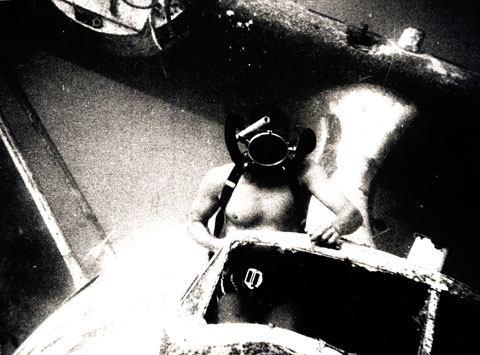
The expert will bring this conclusion:
“If instead of relying on the on-board instruments, Captain Allais had contented himself with looking at the coconut palms which were to his right on the two islands, he would no doubt have better appreciated his height in relation to the body of water. And the accident would certainly not have happened. In addition, there is also the fact that to take the precise axis on which it could have landed, it took too wide. point of earth bothered him. He wanted to catch up in a small bend in the form of a slide, and he crashed irreparably “.
All this, Grandma will not know until much later. For the moment, she regains consciousness on a boat that has come to pick up the survivors. A man who knows her very well comes to comfort her. Right away, she claims her baby but passes out again.
She will wake up in the hospital, Mama TEHA by her side holding Milton in her arms. Moment of misunderstanding: if she took the plane with her family, it was because she had been alerted to her mother’s state of health. But she is doing very well and Grandma realizes that she has been lied to about her state of health …
But she doesn’t dwell on that, especially as it allowed Mama TEHA to take care of Milton while Granny was in a coma. She picked up the child to treat him with traditional raau: she embalmed him in a juicy bark which effectively calmed his burns and healed his wounds. But Mama TEHA does not have all good news: she has to tell Grandma that Célestin has passed away …
There were 23 passengers and 3 crew on board the Catalina. These last died, as well as 12 passengers of which Célestin was unfortunately part …

Raiteva tells us about her grandmother’s feelings at this time:
“I let you imagine how a mother mourns her child that she was unable to save. To make matters worse, she is told that a child’s head has been found but that they have difficulty identifying it because another woman has also lost her child. Granny explains to the authorities that Célestin had a cavity on a molar and that she had placed a cotton ball soaked in a raau in the hole of this cavity… We then returned to confirm that there was indeed a cotton ball in the mouth of this child… Grandma was very angry with herself, she was devastated. ”
HOW TO GET UP?
Raiatea’s family conduct the very brief funeral in a family cemetery. Granny, on the other hand, loses her appetite and even refuses to eat for several days. By refusing to eat, she loses weight to the point of causing a kidney problem: she ends up losing her right kidney.
Papi wanted to join her on Raiatea but he works for his brother on Papeete and he still refuses to let him go. Grandma will eventually stay on Raiatea for over a month with her family. Mama Teha, who looked after Milton during Mamie’s hospitalization, became very attached to him so she asked for FAAMU *. Granny categorically refuses: “I lost a son, I don’t want to lose a second!” Grandma takes her baby back and they return to Tahiti by boat.
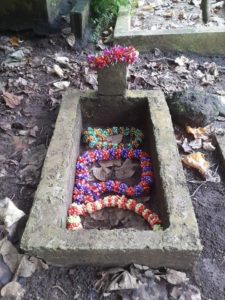
But what to do after such a family tragedy? How to keep moving forward? Raiteva agreed to tell her family story because they didn’t want it all to destroy them: they had to react.
“Following this accident, Grandpa and Grandma receive compensation. No longer wishing to work for his brother, Papi decides to set up on his own. He buys a work truck and embarks on the aggregate. Every morning, he goes on the Papenoo to collect rocks and sell them in aggregates. Granny, a seamstress at the Papeete market, also helps Papi to collect the royalties from their customers on his little bike (because Granny was too afraid to drive a car). Both work very hard but their standard of living is improving little by little.
Two children are subsequently born, a boy Roger and a girl Maiana. They are acquiring other real estate and also getting into the hotel business on Bora Bora. “
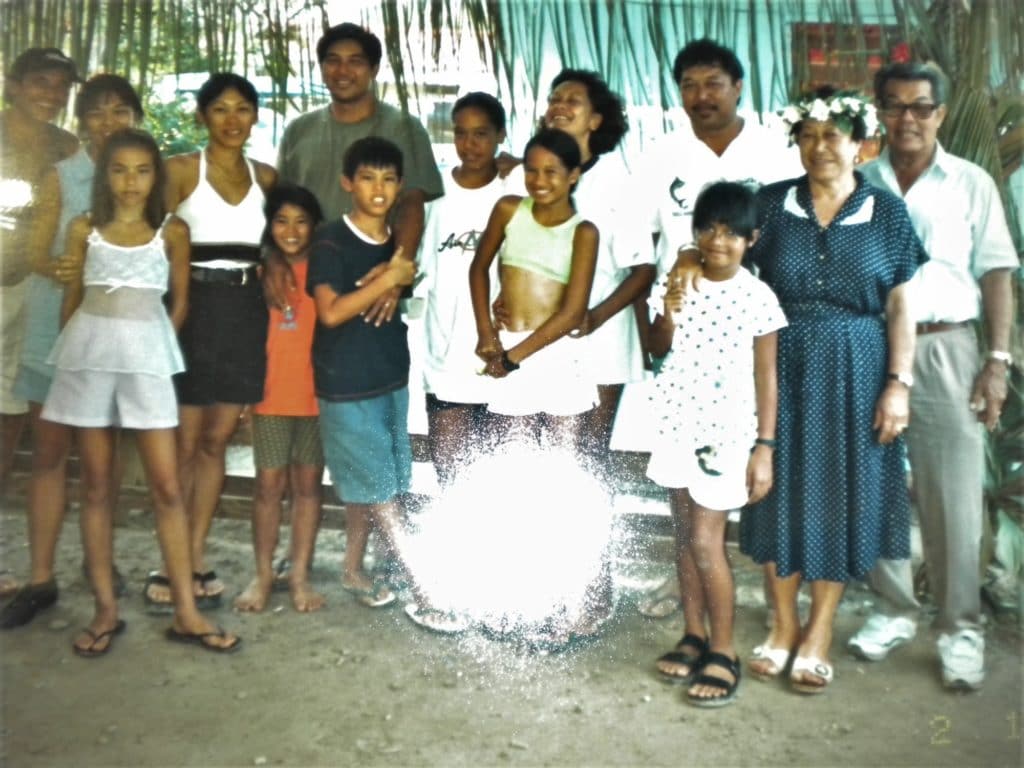
For Raiteva, we can therefore say that there is ultimately a beneficial turning point in this dramatic event, since it is thanks to the compensation received following the death of Célestin, combined with the hard work of his grandparents, that they were lifted out of poverty and were able to provide a good life for their children.

“Papi sent dad to the United States to study for 8 years. Dad graduated, worked for a large dealership in Tahiti and is now a business manager. Roger has become an entrepreneur and Maiana works for Grandpa and Grandma by managing the Bora Bora Motel and real estate rentals. All three had children who made their parents happy.
Grandpa and Grandma took many trips and cruises around the world and even became champions at the Auckland Casino in New Zealand. Suddenly, they ended up acquiring an apartment in front of this casino.
I remember Grandma lecturing us and telling us in Tahitian: “After I’m dead, I forbid you to sell houses and apartments! It stays in the family, never forget that it was thanks to Célestin that we had all of this. If you sell, I will come back! ”
Due to complications from her only kidney, Grandma passed away on August 24, 2018 at the age of 84, two days before her birthday. My mom and I share the same birthday as Granny. We still blew out his candles on the evening of August 26, 2018 and we cried when he was cutting his cake … Five months later, Papi also passed away on January 10, 2019: he was 91 years old. I had dreamed of both of them passing away shortly before that happened, and Celestin calling them out and holding out his hand. Grandpa didn’t have any major health problems so for me, I’m sure he left for love, to join Grandma and Celestin.
More than 60 years after the crash of this Catalina on the outskirts of Raiatea, Célestin is with his parents and we are convinced that they are happy and no longer in pain. It was harder for Dad to admit the passing of his parents because he was very close, especially to Grandma. We have been going to their grave every Sunday for 2 years to clean and place magnificent bouquets. They are much loved by their children, their graves are always clean and flowery. We are very grateful to Célestin for giving us a good life. ”
* FAAMU: traditional Polynesian adoption very widespread at the time, which is more akin to “entrusting” your child for a better life, without hiding his origins
